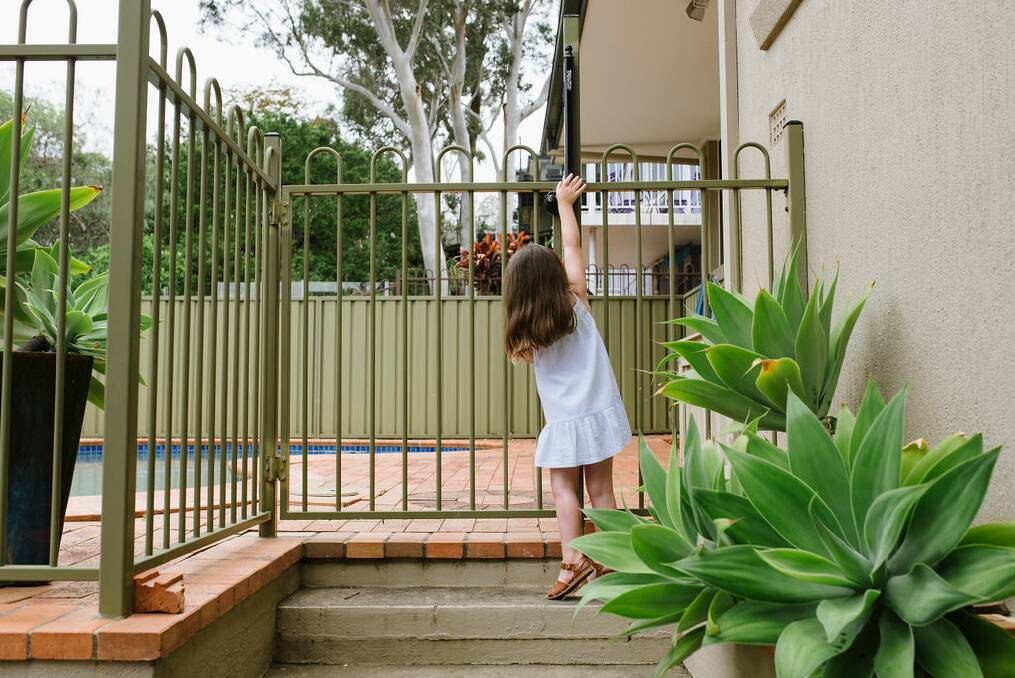
As summer starts to entice swimmers with the temptation of a cool dip, there is one vital reminder for families this holiday season.
Keeping children away from unsupervised areas of water is front of mind particularly as families swarm to backyard pools and beaches.
Drowning among children most commonly happens in summer.
There has been a noticeable spike in overall drownings in the past year, with unfamiliar locations, exhaustion, and interruptions to regular swimming during the COVID-19 pandemic considered key factors.
Research showed COVID-19 saw more people seeking out remote places to escape crowds, swimming outside of patrolled hours, taking more day trips to isolated beaches, rivers or lakes and holidaying domestically.
In the Royal Life Saving National Drowning Report 2021 and Surf Life Saving National Coastal Safety Report 2021, there were 294 drowning deaths in the past 12 months across Australia's coastline, inland waterways and pools, which is 20 per cent higher than last year (245).
Two key trends emerged - spikes in drowning deaths immediately following large-scale lockdowns, and more Australians holidaying domestically and swimming in unfamiliar (and often unpatrolled) locations.
Alarmingly, men were once again overrepresented in the drowning statistics, accounting for 80 per cent, with alcohol and drugs, risk taking behaviour and over-estimating their ability considered key factors.
Complacency around the house can often seep in when people are exhausted from working from home, homeschooling, and restricted time in confined spaces, sometimes resulting in distractions.
Rescue-related incidents on the coast were up 150 per cent from average, with rip currents at unpatrolled locations being prominent factors within these incidents.
There were 25 drowning deaths among children aged 0-4 years, an 108 per cent increase on last year and a nine per cent increase on the 10-year average.
People aged 25-34 years accounted for 17 per cent of all drowning deaths, the most of any age group.
A total of 136 drowning deaths occurred on coastal waters, an 13 per cent increase on last year and the 10-year average.
The risk of drowning triples as soon as a child starts to crawl, peaking shortly after a child's first birthday.
For every fatal drowning in this age group, eight children are admitted to hospital following a non-fatal drowning. On average, these children stay in hospital for 1.5 days. Some sustain lifelong brain injuries.
Swimming pools were the leading location for drowning among children, accounting for more than half of all deaths (52 per cent). Accidental falls into water were the leading activity prior to drowning (77 per cent).
Drowning in children is quick and silent but it can be prevented.
Chief Executive of Royal Life Saving Society Australia Justin Scarr said the Keep Watch Campaign recommended four simple safety tips to prevent child drowning: supervise, restrict, teach and respond.
"Children are curious about their surroundings, which means parents and carers cannot afford to be complacent around the water," he said.
"This year has been challenging for parents, in many cases families have tried to juggle working and schooling from home. We are worried this could lead to distractions and lapses in adult supervision."
"Check your pool fence and gate to make sure they are in working order.
"If supervision fails, a functioning pool fence and gate is the next line of defence working to keep your child safe from drowning."
COVID-19 has also seen children missing out on swimming lessons.
"Royal Life Saving fears that many children will never return to lessons, so won't meet the fundamental water safety benchmarks," Mr Scarr said.

